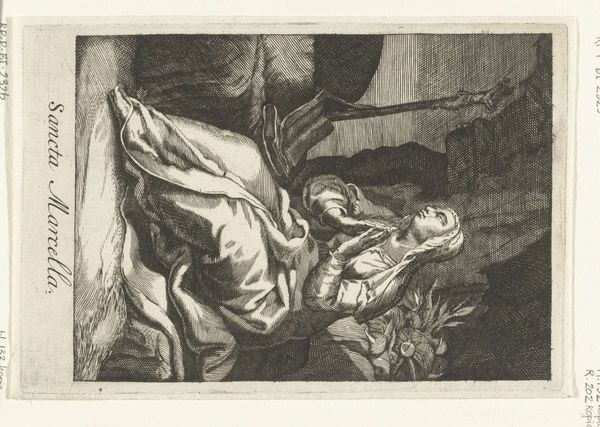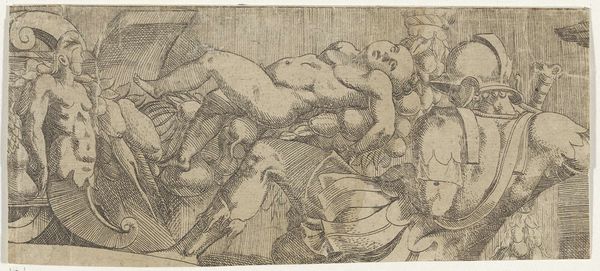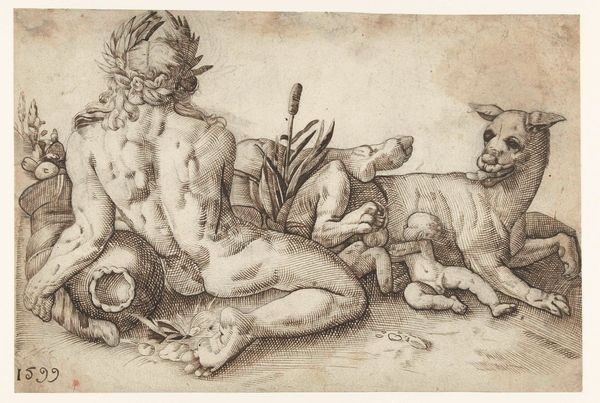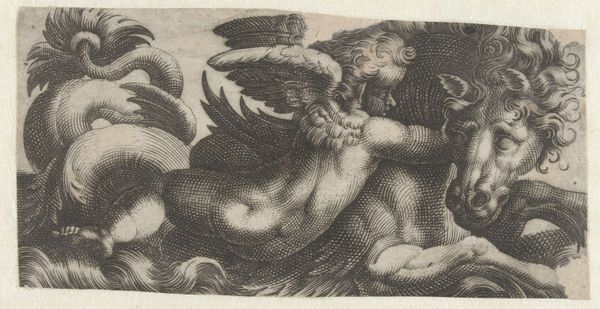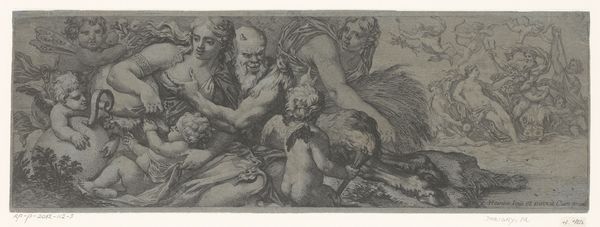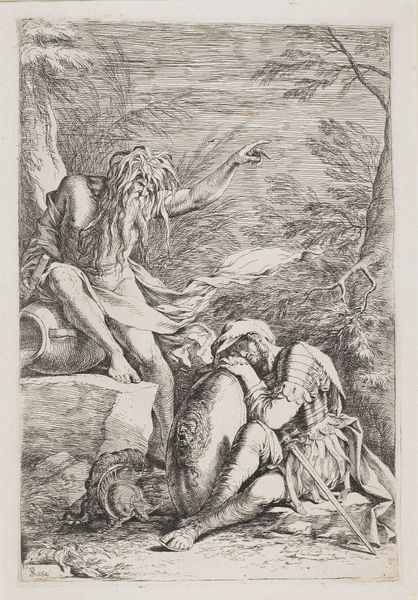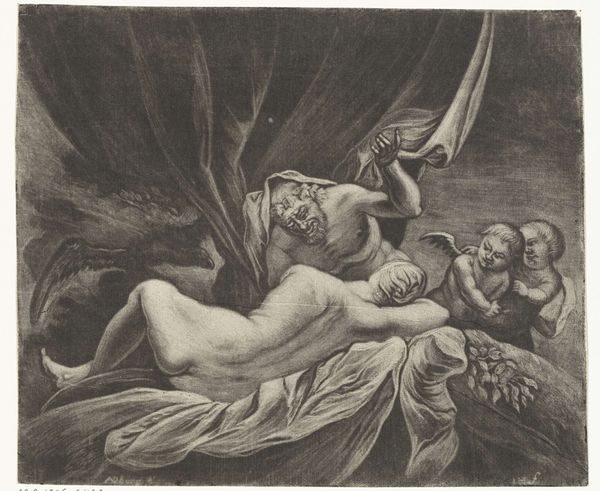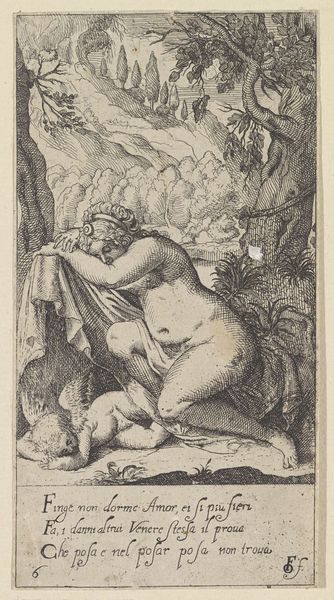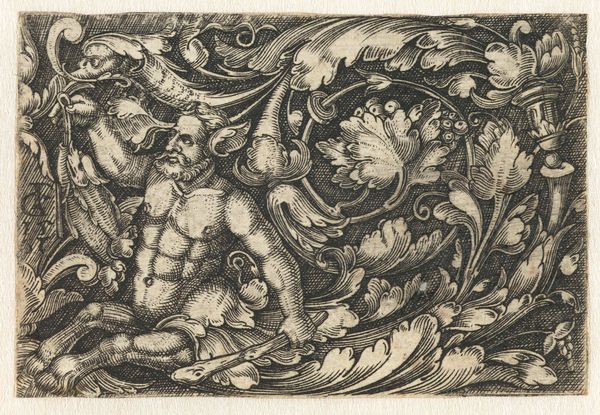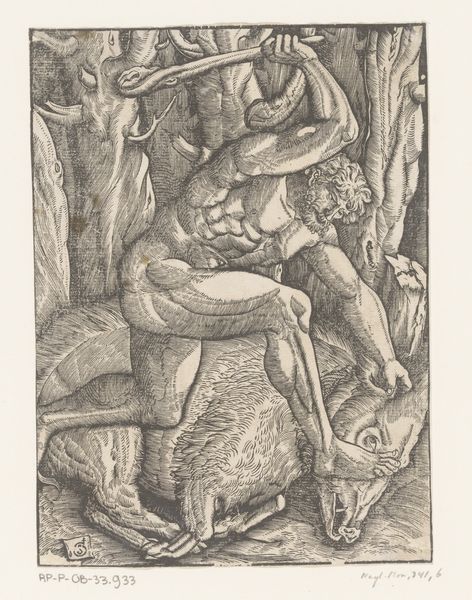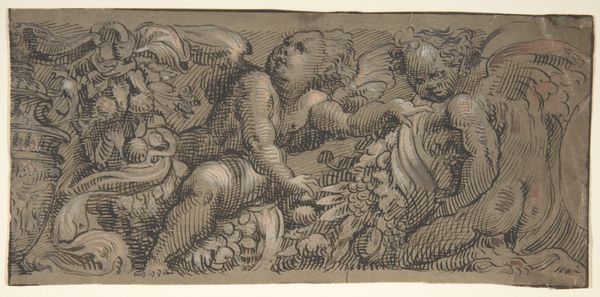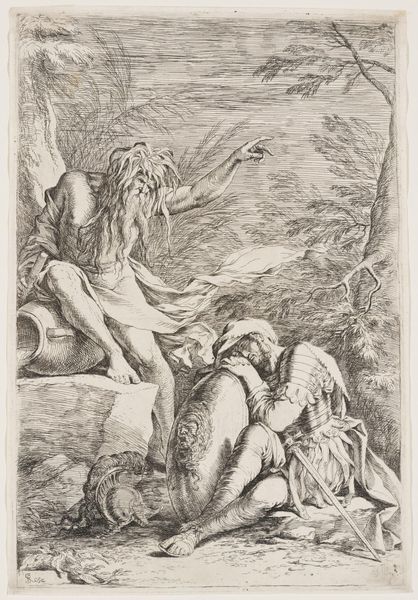
print, engraving
#
allegory
# print
#
mannerism
#
figuration
#
form
#
line
#
italian-renaissance
#
nude
#
engraving
Dimensions: height 147 mm, width 255 mm
Copyright: Rijks Museum: Open Domain
This engraving, "Night," was crafted by Battista Franco around the mid-16th century. We see Night as a voluptuous, reclining nude with her children: Sleep, and Death. Close by we see her attribute: the owl. The owl, traditionally a symbol of wisdom and watchfulness, takes on a dual role here. While it retains its association with Athena, goddess of wisdom, its nocturnal nature also aligns it with the darkness and mystery of the night. The motif appears in various guises throughout art history, from ancient Greek pottery to Renaissance paintings, each time subtly shifting in meaning. Consider the psychological dimension: night is when our subconscious emerges, when dreams blur the line between reality and illusion. The owl, with its piercing gaze and silent flight, embodies this threshold. It invites us to delve into the shadows of our minds, to confront the hidden aspects of ourselves. Franco masterfully captures the cyclical nature of existence, the way in which darkness inevitably gives way to light. The symbol of the owl, with its multifaceted meanings, reflects the enduring power of the night and the enduring fascination with its mysteries.
Comments
rijksmuseum over 2 years ago
⋮
Until recently, this engraving was completely unknown. On the basis of style and technique it can be attributed to the Venetian artist Battista Franco. In his early years Franco made numerous drawings after sculptures by Michelangelo, including his Four Times of the Day in the San Lorenzo Church in Florence. The printmaker added a sleeping boy to Michelangelo’s representation of Night.
Join the conversation
Join millions of artists and users on Artera today and experience the ultimate creative platform.

